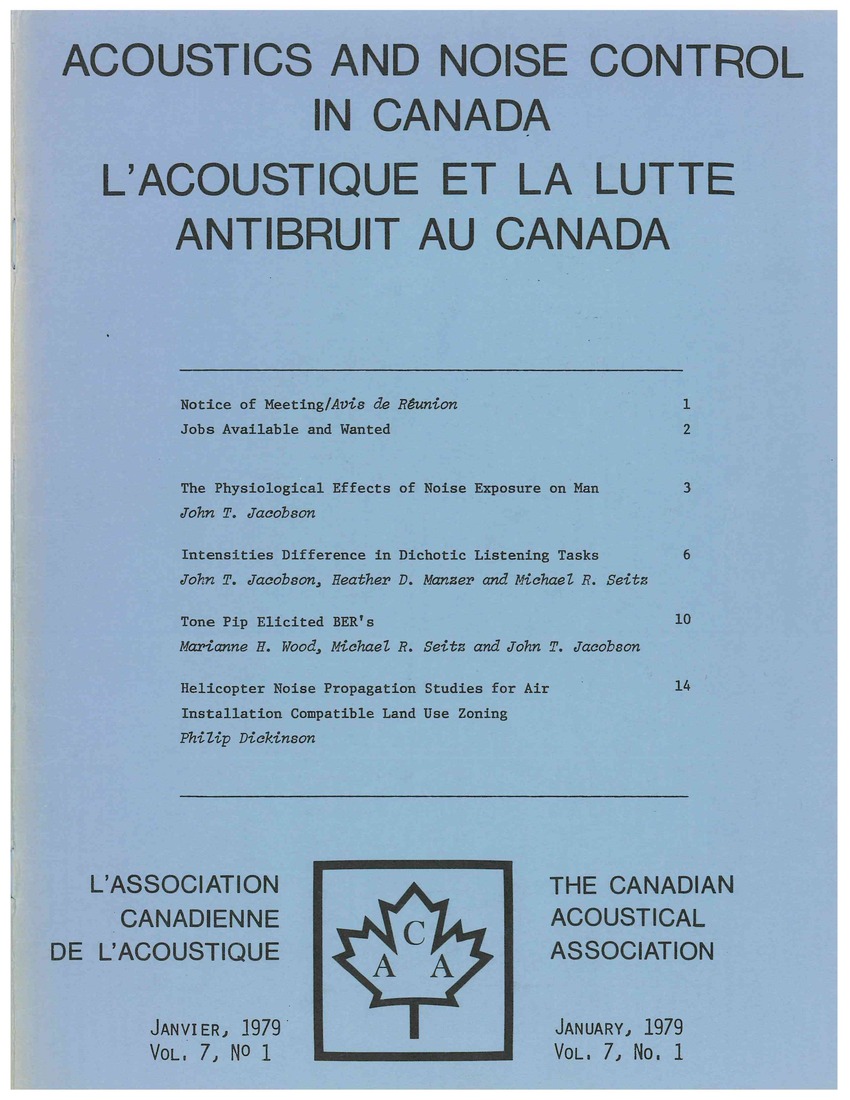Tone Pip Elicited BER's
Abstract
Since the initial work of Jewett and Williston in 1971, a remarkable degree of quantification and confirmation of brainstem evoked response data has been published. The consensus of findings has led to the clinical acceptance of BER as an intricate test in the diagnostic assessment of both normal and pathological subjects. BER studies continue to demonstrate that the BER technique does provide an objective means for assessing hearing, especially among infants and difficult-to-test patients. The principle underlying BER is the same as that used for any evoked potential study. Basically, EEG changes resulting from auditory stimuli are recorded by scalp electrodes. The result is a specific wave form which may be recorded and the latency of each wave peak can be accurately measured. All in all, there are seven different wave peaks that are available to use as measurement points, some more stable than others, each reflecting different areas of neural activity in the auditory pathways through the brainstem. The individual peaks reflect changes in the auditory pathway that occur within the first 10 msec after the onset of the auditory stimulus. Each of the seven different waves has its own Roman numeral designator and anatomical location. In brainstem evoked response audiometry, Wave V has been found to be the most diagnostically useful waveform. Accurate estimates of thresholds have been made from the curves described by the latency values of the Wave V's of BER's elicited by click stimuli. These thresholds refer to intensity only and lack the frequency specificity required for audiological assessment. Speculation exists that other stimuli, especially more frequency-specific stimuli, might provide additional frequency-specific information. The purposes of our study were 1) to obtain Wave V latency curves for selected tone pip frequencies; 2) to compare the frequency-specific curves with previously obtained tone pip curves from other studies; and 3) to determine, if possible, the clinical utility of the selected procedure.Additional Files
Published
How to Cite
Issue
Section
License
Author Licensing Addendum
This Licensing Addendum ("Addendum") is entered into between the undersigned Author(s) and Canadian Acoustics journal published by the Canadian Acoustical Association (hereinafter referred to as the "Publisher"). The Author(s) and the Publisher agree as follows:
-
Retained Rights: The Author(s) retain(s) the following rights:
- The right to reproduce, distribute, and publicly display the Work on the Author's personal website or the website of the Author's institution.
- The right to use the Work in the Author's teaching activities and presentations.
- The right to include the Work in a compilation for the Author's personal use, not for sale.
-
Grant of License: The Author(s) grant(s) to the Publisher a worldwide exclusive license to publish, reproduce, distribute, and display the Work in Canadian Acoustics and any other formats and media deemed appropriate by the Publisher.
-
Attribution: The Publisher agrees to include proper attribution to the Author(s) in all publications and reproductions of the Work.
-
No Conflict: This Addendum is intended to be in harmony with, and not in conflict with, the terms and conditions of the original agreement entered into between the Author(s) and the Publisher.
-
Copyright Clause: Copyright on articles is held by the Author(s). The corresponding Author has the right to grant on behalf of all Authors and does grant on behalf of all Authors, a worldwide exclusive license to the Publisher and its licensees in perpetuity, in all forms, formats, and media (whether known now or created in the future), including but not limited to the rights to publish, reproduce, distribute, display, store, translate, create adaptations, reprints, include within collections, and create summaries, extracts, and/or abstracts of the Contribution.


